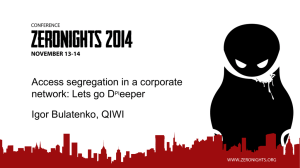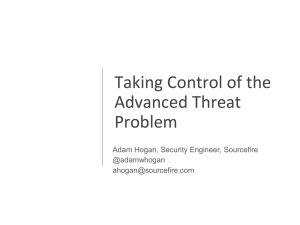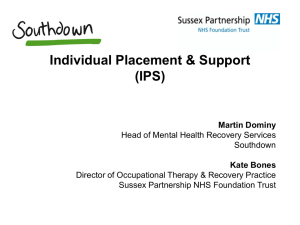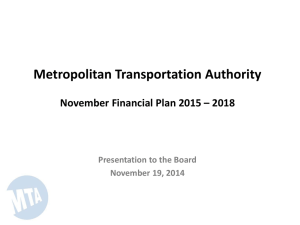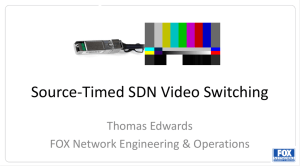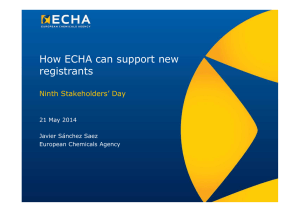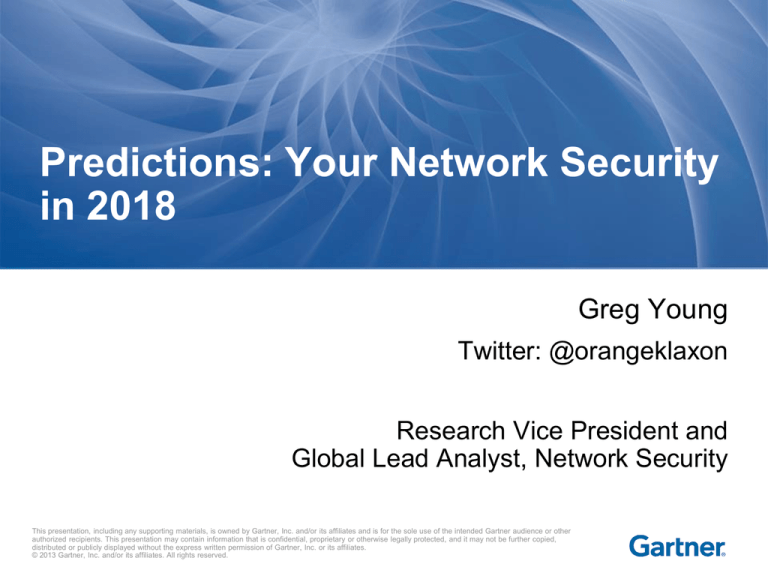
Predictions: Your Network Security
in 2018
Greg Young
Twitter: @orangeklaxon
Research Vice President and
Global Lead Analyst, Network Security
This presentation, including any supporting materials, is owned by Gartner, Inc. and/or its affiliates and is for the sole use of the intended Gartner audience or other
authorized recipients. This presentation may contain information that is confidential, proprietary or otherwise legally protected, and it may not be further copied,
distributed or publicly displayed without the express written permission of Gartner, Inc. or its affiliates.
© 2013 Gartner, Inc. and/or its affiliates. All rights reserved.
We’re Getting More Vulnerable
Source: Symantec Internet Security Threat
Report 2014
1
Attacks Are Hurting More
2
Compliance is not Good Enough,
but We can’t Even Get It
Source: Verizon 2014 PCI Compliance Report
3
We Have Fewer Of Our Staff Securing Us
IT Security Support Full-Time Equivalents
as a Percentage of Total IT Full-Time Equivalent
From 2008 to 2012
4
Security Spend Continues To Take Larger
Share of IT Pie
Cumulative %
60
50
40
Security
30
IT
20
10
0
2012
2013
2014
2015
2016
Year
Source: Only required for non-Gartner research
2017
Security Spending by Segment 2014
Millions
Consumer Security Software
IT Outsourcing
Implementation
Hardware Support
Consulting
VPN/Firewall Equipment
IPS Equipment
Data Loss Prevention
Security Testing (DAST and SAST)
Millions
Security Information and Event Management (SIEM)
Secure Web Gateway
Secure Email Gateway
Other Security Software
Endpoint Protection Platform (Enterprise)
Other Identity Access Management
Web Access Management (WAM)
User Provisioning (UP)
-
2,000
4,000
6,000
8,000
10,000
12,000
14,000
16,000
Security Spending by Segment 2014
Millions
VPN/Firewall Equipment
IPS Equipment
Data Loss Prevention
Security Testing (DAST and SAST)
Security Information and Event Management (SIEM)
Millions
Secure Web Gateway
Secure Email Gateway
Other Security Software
Endpoint Protection Platform (Enterprise)
-
1,000
2,000
3,000
4,000
5,000
6,000
7,000
Market Subdivision: Tech. Maturity
expectations
Application Shielding
Dynamic Data Masking
Interoperable Storage Encryption
Hypervisor Security Protection
IaaS Container Encryption
Security in the Switch
Stateful Firewalls
Secure Email Gateway
Advanced Threat Detection Appliances
Operational Technology Security
Penetration Testing Tools
Network IPS
Dynamic Application
Security Testing
Vulnerability Assessment
Cloud-Based Security Services
Introspection
WLAN IPS
Web Services Security Gateway
Context-Aware Security
Mobile Data Protection
Open-Source Security Tools
DDoS Defense
Software Composition
SIEM
Analysis
Web Application Firewalls
Next-Generation Firewalls
Secure Web
Network Security Silicon
Gateways
Static Data Masking
DMZ Virtualization
Static Application Security Testing
Endpoint Protection Platform
Network Access Control
Next-Generation IPS
Application Control
Unified Threat Management (UTM)
Database Audit and Protection
As of July 2013
Innovation
Trigger
Peak of
Inflated
Expectations
Trough of
Disillusionment
Slope of Enlightenment
Plateau of
Productivity
time
Plateau will be reached in:
less than 2 years
2 to 5 years
5 to 10 years
From: "Hype Cycle for Infrastructure Protection, 2013," 31 July 2013 (G00251969)
more than 10 years
obsolete
before plateau
No, Sorry — Still No Massive Netsec
Convergence in 2018
In 2018, most of you will still have a stand-alone
next-generation firewall (NGFW), secure Web gateway (SWG)
and other stuff
NGFW
ATA
EPP
SWG
Some of Your Netsec Moves Into the Cloud
• Off-premises SWG is growing fastest: 13% cloud
today, with predictions of 25% by 2015; but it's
slow moving and likely to still be 25% in 2018.
• ATA will continue to have cloud assistance.
• Firewall and IPS remain on-premises.
• Hosting remains the exception where all can be
in the cloud.
Some of Your Netsec Does Converge
• ATA coordination capability moving into SWG
and NGFW.
• SSL VPN moves mostly into firewall.
• URL filtering, already converged, can go in a
few places.
• NGFW expansion continues; ATA incorporates
traditional IPS.
• Stand-alone IPS becomes rarer.
• Firewalls optimized for data center produced
by mainstream firewall vendors: one-brand
bias continues.
Security Intelligence
Security Intelligence will remain undefined in 2018
In other words…
Security will not be that intelligent in 2018
• SIEM platform maintains its role as primary information
and event correlation point. Wide, yet shallow, and will
not be a console replacement.
• SIEM will expand its capabilities and handle more events,
rather than point products for "security intelligence"
being deployed.
• Consoles will remain the best primary source, yet remain
silos — what analysts use after SIEM.
SDN Security in 2018 Will Be Either …
SDN Security
or
Securing SDN
A standard,
multivendor protection
Protecting controllers
Infrastructure provided
Logically, the same
as we do today
Self-defending controller
Third-party vendors
Security interoperability
Change control doesn't … change
Compliance doesn't change
So which of the two is it?
We’ve Seen Shifts Before
Viruses
Spam
Worms
Not solved, but reduced to mostly minor annoyance levels
Always followed by spending changes
Or Shifted To New, More Difficult Paths
15
Reduced Impact
Source: Symantec Internet Security Threat Report 2014
16
Security Sustainability
Source: Wikipedia, Sustainability
Impediments to Sustaining the
Current Trajectory
Spying
Open Source
SMB
Alerts
Staffing
Partial Source: Wikipedia, Sustainability
Spending
In 2018 Your Netsec Will….
• Be expensive and mostly point solutions.
• Use out-of-band inspection — still mainstream for
WAN/LAN and very-high-speed links.
• Need to secure your SDN and virtualization, as they won't
be self-defending.
• Require accommodation of mixed IPv4/v6.
• Have more hybrid aspects.
• Still be deployed in depth.
• Not be fully virtualized, but accommodate virtualization.
Call to Action: 2018 is less than one firewall refresh away.
Likely 2018 Crisis Points
• Common criteria devalued
without replacement.
• Advancing rate of security
product vulnerabilities and
poor disclosure.
• Security of IPv6 within
products lags behind IPv6
adoption rates.
• No let up in threat will stress
netsec budgets and
operations.
Secure Network Design Principles
1. No single element compromise should compromise
the whole application stream.
2. Put trust in trusted components.
3. Isolation to isolate. Segmentation to segment.
4. Hosts are not self-defending.
5. Correlation, visibility, least privilege, and compliance.
By jove, these principles stand the
test of time and are
not some faddish feature.
Like my wig. Or my pen.
The frilly shirt still rocks, yes?
21
Recommended Gartner Research
Ending the Confusion About Software-Defined
Networking: A Taxonomy
Joe Skorupa and others (G00248592)
Magic Quadrant for Enterprise Network Firewalls
Greg Young (G00229302)
Hype Cycle for Infrastructure Protection
Greg Young (G00229303)
For more information, stop by Gartner Research Zone.
Additional Material
23
The Controller Needs Protecting
Controller
Vulnerabilities
But they promised
I’d be self-defending
Spoofing switches
Controller
Resource
consumption
DDoS
24
So, Protect The Controller
Default SSL
On
New
Safeguards
Controller
Vulnerabilities
IPS
Hardened
Authentication
Spoofing switches
Controller
IDS
Redundant
Specific QoS
Resource
consumption
Paths
DDOS
25
Look To Your Current Security Vendors…
But Most Are Not There Yet
Better integration of 3rd party security ecosystem
It is still the early days
Limited firewall
rule selfprovisioning
Security control plane integration into
orchestration for context sharing
Infrastructure vendor sales
force has trouble letting go
Get your polygraph warmed
up – most security vendors
are not on top of SDN/NFV
Better isolation of security
control plane
SPA: Through 2018, more than 75% of
enterprises will continue to seek
network security from a different
vendor than their network
infrastructure vendor.
26
What Does IPv6 and DOS Mean to
Security in 2018?
Volumetric Defenses Go More Hybrid
2006 "The attacks are bigger than my pipes"
2010
"Cloud-only is too much $"
2014
"These need to work together better"
2018
Off-Premises
CPE
IPv6 Security Needs IPv6
Source: Google
Commonly Seen Characteristics of
Security Threats that are Peaking
• Lowered impact of attacks notwithstanding lowered or
increased occurrences.
• Enterprise response has become ‘operationalized’, and is
now handled by an established safeguard with little staff
interaction, workflow, helpdesk, or vulnerability management
procedure.
• The acquisition or disappearance of the majority of pure-play
products specific to the threat.
• The threat is being subsumed into a newer or more
advanced threat.
• Point products are converging into existing security products
as a feature— especially when offered at no additional
charge.
30
Buy Hedges (And Maybe Save Anyway)
MSSP
As-AService
Commitment
Lease
Cloud
Off Prem
31
Breaking A Link In the Kill Chain
Getting good at one can hinder across multi-vectors
Behavioral
Reduced Gray Lists
Reconnaissance
ATA
Delivery
Weaponization
Actions On
Objectives
Installation
Exploitation
Command&Control
SSL-inspection
Anti-evasion
Pre-filters
Cloud lists
32

